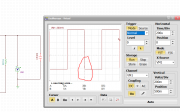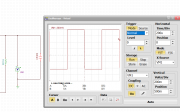Oh exciting that my thread has found some attention!
Surprised that I am actually the first who did this (?). After I repaired the amp (94 volts on the right channel, defective VU meters) and after some unexpectedly long listening session it was clear to me, this thing is outstanding and it deserves a full restoration. Mainboard recapped, filter caps replaced and last but not least of course the output transistors.
Originally with all repairs the amp ran fine with the silicone pads and completely strange outputs (one side equipped with BU608 from ISC) and another with RCA 2N5240. All not original, but it worked. At the same time I also have twenty NEC 2SD555 here, also put these in, same phenomenon, but they are apparently known to run instable in that circuit. I thought that the MJ21196G were the best choice for the amplifier and would not give any further problems.
I'll try using base stoppers on the output triplet or bypass capacitors on Q7 and Q10, though I find it odd that the BU608 (newer output device, with a high fT) ran fine in them without any modification.
The answer will be: WOPL it, and yes, this will happen over the next few months, but I would like it to run again now.





